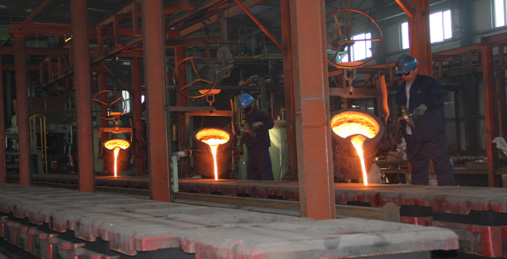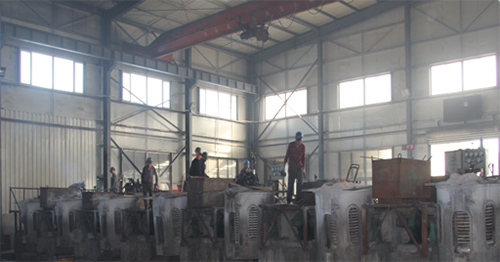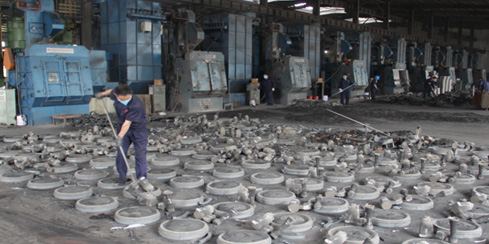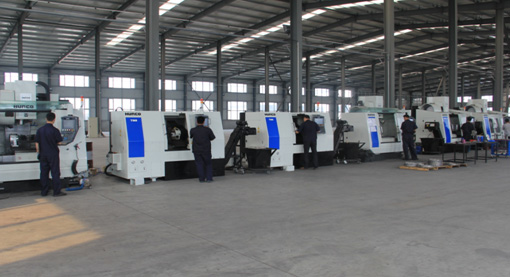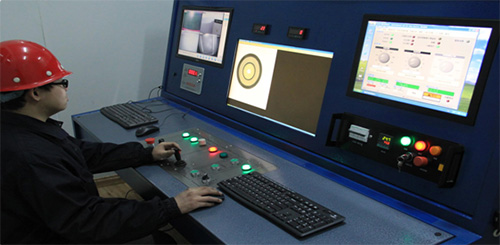Airport refueling pipeline system compressed air purging and aviation fuel cleaning Cheng Weiguo (Shanghai Industrial Equipment Installation Company Shanghai 200080) Macau International Airport uses pipeline system to refuel the aircraft, that is, the aviation fuel from the storage tank area uses the fuel pump, through The refueling pipeline is transported to the apron, and then a special fuel truck is used to add aviation fuel to the aircraft from the refueling well. The fueling system pipeline adopts double line m, and there are 18 sets of refueling wells, 4 sets of high point venting wells, 4 sets of low point drainage wells and 9 sets of partitioning valves (as shown in Figure 1). Since the aircraft has special requirements for aviation fuel, stricter cleanliness requirements are imposed on the construction and installation of the aviation fuel refueling pipeline system. 1 Process principle and process flow 1.1 First stage: Compressed air purging Because various airports are generally built away from industrial areas and residential areas, the biggest feature is the lack of large-capacity compressed air source, which gives fuel Tube compressed air purge brings some difficulty. A more economically viable method is to use the capacity of the refueling pipeline system to perform the purging operation of the compressed air, that is, to inject compressed air into the refueling pipeline system, and the pressure rises to 0.4 to 0.5 MPa (pressure selection is considered To the capacity of the fuel pipeline, and consider the timeliness of the work), suddenly open the temporary butterfly valve installed on the fuel supply pipeline, so that the compressed air in the system is concentrated to the end of the pipeline, and the high-speed airflow can make the larger diameter in the pipeline. Particulate matter and moisture are taken out. 1.2 Second stage: fuel cycle cleaning will form a circuit for the oil storage tank, the fuel pump and two fueling lines, inject aviation fuel into the system, start the fuel pump to make the fuel flow quickly in the pipeline, and use the piping system. Temporary filter in the medium, and constantly change and gradually increase the specifications of the filter to filter out the fine particles remaining in the pipeline system. During the oil cleaning process, the storage fuel tank is used to precipitate the cleaning fuel, improve the cleanliness of the fuel, and continuously sample and analyze until the international standard of aviation fuel is reached. 1.3 Process flow chart 2 Compressed air purging 2.1 Preparation before purging (1) Organize personnel to carry out the integrity check of the construction to ensure that no hot work is performed after purging. (2) The fire protection facilities of the project have been accepted and put into use to ensure the safety of purge and oil cleaning operations. (3) Dismantle all the instruments, current limiting devices, filters and electric valves on the entire aviation fuel pipeline system, and install temporary short pipes to simultaneously isolate the oil pump, oil storage tank, fueling well and some remaining on the pipeline system. mouth. (4) Prefabricating and installing some necessary temporary communication pipes to connect the blind points of the whole pipeline system and the separation pipelines together to fully install the internal volume of the pipeline system in June 2000, and increase the storage capacity of the compressed air. At the same time, the valve on the pipeline system is used to allow the purge gas to flow in one direction in its interior. (5) As shown in Fig. 2, a set of temporary compressed air drying filter device is processed and installed to remove moisture and oil mist generated by the air during the compression process. (6) Select the quick-open butterfly valve and install it in the appropriate position to purge the pipeline (or replace the valve on a pipeline). (7) Perform necessary reinforcement measures on the purge port of the pipeline to prevent the reaction force generated by the jet flow during the purge from displacing or damaging the fuel supply pipeline. 2 .2 purging machine, inject compressed air into the pipeline system, the working time is nearly 60 min, the absolute pressure in the system can reach about 0.4 to 0.5 MPa. Open the temporary quick opening butterfly valve at a certain point on the refueling main line ( By using the remaining port of the pipeline as the outlet of the airflow, due to the pressure difference on both sides of the butterfly valve, a rapid opening speed will produce a strong injection speed of about 100 m/s, and the airflow speed is utilized. The debris and water in the pipeline can be taken out. When the compressed air is injected, the main refueling pipeline has a large diameter and a long pipeline, and it is necessary to repeat the operation a plurality of times, and the rear part is pushed to the end of the entire pipeline from section to section. In order to achieve the purpose of purging the pipeline. 2. 3 Purge test At the discharge port of each pipeline, set a fixed target plate, wrap a white cloth before purging, and after each purge, check the traces of debris attached to the white cloth to determine the pipeline. Is the purge qualified? 3 Fuel cycle cleaning 3.1 Preparation before cleaning (1) Connect the oil storage tank, filter, fuel pump, electric valve and fueling well on the pipeline system to form a circulation loop to recover the part of the whole pipeline system. Meters (such as pressure, temperature, etc.) to monitor the pipeline system for oil cleaning operations. (2) Take out the coarse filter filter basket in front of the fuel pump and the fine filter element after the pump, and install a temporary stainless steel filter in the pre-pump filter. (3) Injecting aviation fuel (JET A 1) into the entire fuel pipeline system. Despite the accumulation of air in the road system, the fuel injection amount should keep the storage tank above the low liquid level and the total volume of the pipeline system. More than 3 times, the actual injection volume is about 1600 m (4). The fuel tightness test of the whole pipeline system is carried out. After the fueling system is immersed in the fuel for 24 hours, the pressure test pump is turned on, and the pressure is gradually increased to 1.6 MPa. No pressure drop at 24 h means that the pipeline system is tested for tightness. 3.2 Refueling cleaning operation starts all the fueling pumps on the entire refueling pipeline system (5 in total), and adjusts the outlet valves of the pump so that the flow rate of each refueling pump reaches the rated value of 230 m / h, and the fuel in the main refueling line The ideal flow rate can reach 4.52 ~ 6.51 m / s, from which it can be calculated that this flow rate can take away iron debris of equivalent diameter 1 mm and below, other lighter equivalent equivalent diameter debris is not included under. The fuel cycle is divided into 4 operating procedures. (1) Use 100 mesh stainless steel screen, check and clean the screen once every 2 hours, and gradually extend it to 8 hours to check and clean once. When the cleanliness of the screen reaches the visual residue no more than 3/cm. . After 24 hours of shutdown, the operation of precipitating, separating, removing debris and moisture from the aviation fuel in the storage tank. (2) First replace the 160 mesh stainless steel screen and repeat the above procedure until the visual inspection is passed. (3) After replacing the 200 mesh stainless steel screen, repeat the above procedure until the visual inspection is passed. (4) Restoring the filter element and the basket in the fine filter on the pipeline system (while retaining its 200 mesh stainless steel screen), and using the hydrophilic property of the filter element, the trace water contained in the aviation fuel in the pipeline system can be removed. . For every 2 hours of operation, the water content of the oil is tested and tested with the selected test paper. For the fuel in the pipeline, the low and high points of the pipeline are sampled. According to the inspection by the authority, the four indicators of aviation fuel meet the API1581 standard. The system's fuel cycle cleaning is over. 4 Conclusion Through the engineering practice, the construction scheme has successfully cleaned the aviation fuel pipeline, and the entire cleaning operation only took about 30 days, thus greatly reducing the construction cost. It is particularly worth mentioning that keeping the inside of the pipe clean during construction can lay a good foundation for future pipe cleaning work.
Casting is a process manufacturing way which is the liquid metal material is poured into a mould which is with hollow cavity of desired shape. The manufacturing way mainly includes Iron Castings, Steel Castings and non-ferrous metal castings.
Iron castings are usually from processing ways of green sand casting, furan resin sand casting, shell mold casting, and automatic molding line casting.
We owned 6 automatic molding lines, 22 electric furnaces, 120 sets machining equipment, and equipped with shot blasting equipments, advanced inspection equipments including X-rays, spectrum, CMM etc..
The related industries mainly include agricultural equipment - Tractor Parts, agricultural parts; flow control industry - valve body, valve disc, valve bonnet, pump housing, pump impeller, handwheel; automotive parts - steering knuckle, connecting rod, brake disc and drum; Engine Parts - gearbox parts, exhaust manifold, intake manifold; cylinder parts; lathe parts; turbocharger parts; manhole cover and so on.
Iron Castings Iron Castings,Cast Iron,Cast Iron Flange,Iron Sand Castings Dandong Hengrui Machinery Co., Ltd. , http://www.hrcastings.com